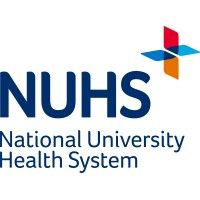预约演示
更新于:2025-05-07
Neuroendocrine carcinoma of thymus
胸腺神经内分泌癌
更新于:2025-05-07
基本信息
别名 Neuroendocrine carcinoma of thymus、Neuroendocrine carcinoma of thymus (disorder)、Thymic Neuroendocrine Carcinoma + [3] |
简介 A small or large cell neuroendocrine carcinoma arising from the thymus. |
关联
7
项与 胸腺神经内分泌癌 相关的药物靶点 |
作用机制 IFNAR激动剂 |
原研机构 |
最高研发阶段批准上市 |
首次获批国家/地区 中国 |
首次获批日期2018-04-12 |
作用机制 AXL抑制剂 [+10] |
在研机构 |
原研机构 |
在研适应症 |
最高研发阶段批准上市 |
首次获批国家/地区 美国 |
首次获批日期2012-11-29 |
7
项与 胸腺神经内分泌癌 相关的临床试验NCT06141369
Treatment of Advanced Endocrine Tumor With Iindividualized mRNA Neoantigen Vaccine (mRNA-0523-L001)
Treatment of advanced endocrine tumors, including adrenal corticocarcnioma (ACC), medullary thyroid carcinoma (MTC), thymic neuroendocrine tumor and pancreatic neuroendocrine tumor is challenging. Previous genomic profiling studies showed they presented a number of somatic mutations. The tumors Individualized mRNA neoantigen vaccine provide a promising solution since a significant portion of these tumors showed high quality of tumor specific neoantigen. The primary objective is to observe and evaluate the safety and tolerability of individualized mRNA neoantigen vaccine (mRNA-0523-L001) for the treatment of advanced endocrine tumors, failure of standard treatment or no standard treatment currently available. The secondary objective is to observe the preliminary efficacy of mRNA-0523-L001 for the treatment of advanced endocrine tumors, failure of standard treatment or no standard treatment currently available, including:
Neoantigen-specific CD4+ and CD8+ T lymphocyte responses induced by mRNA-0523-L001;
Objective response rate (ORR) and disease control rate (DCR) of tumors;
Progression-free survival (PFS).
Neoantigen-specific CD4+ and CD8+ T lymphocyte responses induced by mRNA-0523-L001;
Objective response rate (ORR) and disease control rate (DCR) of tumors;
Progression-free survival (PFS).
开始日期2024-01-13 |
申办/合作机构 |
NCT05061784
Revisiting the Evidence for Routine Transcervical Thymectomy for the Prevention of Thymic Carcinoid Tumours in MEN-1 Patients a Case Series
A case series was built after review of available literature by searching four databases (PubMed, Embase, Medline and Cochrane Library) for observational studies or case reports on routine prophylactic TCT for MEN-1 and the development of thymic carcinoids.
开始日期2021-07-14 |
NCT03375320
Randomized, Double-Blinded Phase III Study of CABozantinib Versus Placebo IN Patients With Advanced NEuroendocrine Tumors After Progression on Prior Therapy (CABINET)
This phase III trial studies cabozantinib to see how well it works compared with placebo in treating patients with neuroendocrine or carcinoid tumors that may have spread from where it first started to nearby tissue, lymph nodes, or distant parts of the body (advanced). Cabozantinib is a chemotherapy drug known as a tyrosine kinase inhibitor, and it targets specific tyrosine kinase receptors, that when blocked, may slow tumor growth.
开始日期2018-10-26 |
申办/合作机构 |
100 项与 胸腺神经内分泌癌 相关的临床结果
登录后查看更多信息
100 项与 胸腺神经内分泌癌 相关的转化医学
登录后查看更多信息
0 项与 胸腺神经内分泌癌 相关的专利(医药)
登录后查看更多信息
280
项与 胸腺神经内分泌癌 相关的文献(医药)2025-04-01·Virchows Archiv
Insulinoma-associated protein-1 (INSM-1) is a useful diagnostic marker for the evaluation of primary thymic neuroendocrine neoplasms: an immunohistochemical study of 27 cases
Article
作者: Hung, Yin P ; VanderLaan, Paul ; Mino-Kenudson, Mari ; Suster, David ; Chacko, Davis
2025-03-01·Med
Genomic landscape and molecularly informed therapy in thymic carcinoma and other advanced thymic epithelial tumors
Article
作者: Paramasivam, Nagarajan ; Fröhlich, Martina ; Hüllein, Jennifer ; Richter, Daniela ; Hanf, Dorothea ; Westphalen, C Benedikt ; Jahn, Arne ; Desuki, Alexander ; Allgäuer, Michael ; Rieke, Damian T ; Teleanu, Maria-Veronica ; Rupp, Luise ; Christopoulos, Petros ; Kreutzfeldt, Simon ; Gieldon, Laura ; Schröck, Evelin ; Glimm, Hanno ; Heilig, Christoph E ; Schmitz, Marc ; Illert, Anna L ; Boerries, Melanie ; Stenzinger, Albrecht ; Hutter, Barbara ; Kindler, Thomas ; Rostock, Lysann ; Grosch, Heidrun ; Hübschmann, Daniel ; Baude-Müller, Annika ; Brandts, Christian ; Fröhling, Stefan ; Jöhrens, Korinna ; Arlt, Marie ; Neumann, Olaf ; Horak, Peter ; Uhrig, Sebastian ; Mock, Andreas ; Apostolidis, Leonidas ; Heining, Christoph ; Krackhardt, Angela M ; Wiesweg, Marcel ; Lipka, Daniel B ; Werner, Maximilian ; Jelas, Ivan ; Beck, Katja ; Möhrmann, Lino ; Arnold, Jonas S ; Oleś, Małgorzata ; Möhrmann, Elena E ; Kerle, Irina A
2025-02-01·Archives of Pathology & Laboratory Medicine
Insulinoma-Associated Protein-1 Expression in Lymphoepithelial Carcinoma of the Thymus: A Potential Pitfall for Diagnosis With Neuroendocrine Carcinomas of the Thymus
Article
作者: Mackinnon, A. Craig ; Suster, Saul ; Suster, David I.
分析
对领域进行一次全面的分析。
登录
或

Eureka LS:
全新生物医药AI Agent 覆盖科研全链路,让突破性发现快人一步
立即开始免费试用!
智慧芽新药情报库是智慧芽专为生命科学人士构建的基于AI的创新药情报平台,助您全方位提升您的研发与决策效率。
立即开始数据试用!
智慧芽新药库数据也通过智慧芽数据服务平台,以API或者数据包形式对外开放,助您更加充分利用智慧芽新药情报信息。
生物序列数据库
生物药研发创新
免费使用
化学结构数据库
小分子化药研发创新
免费使用



